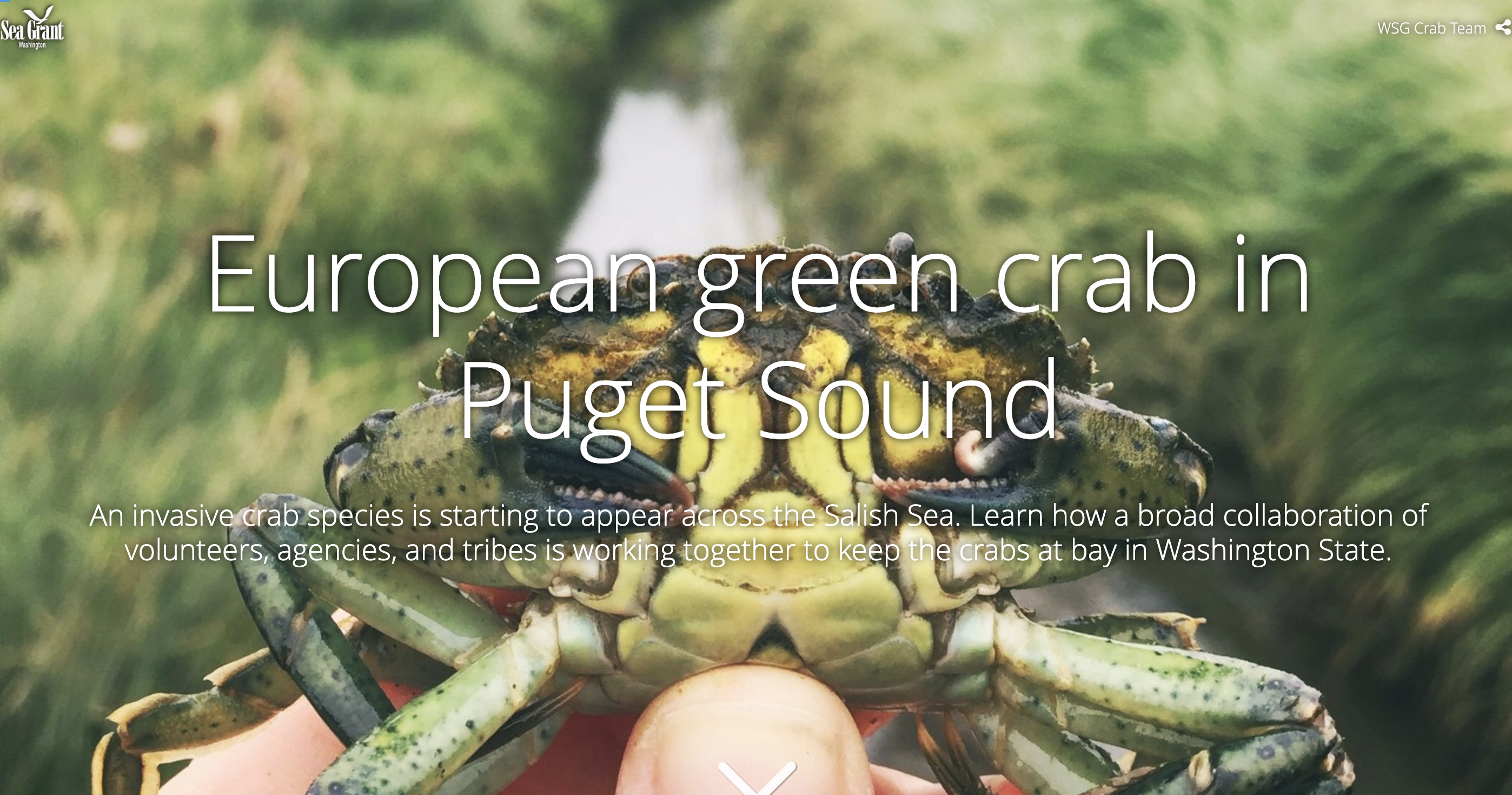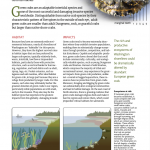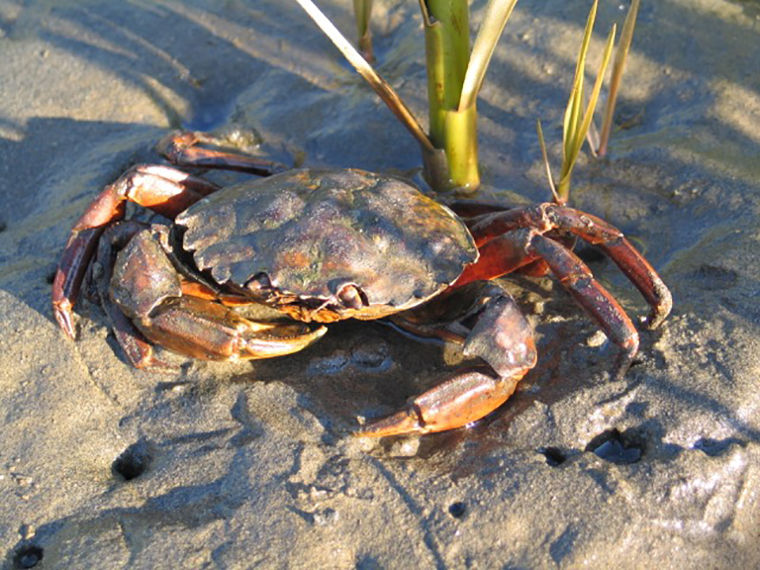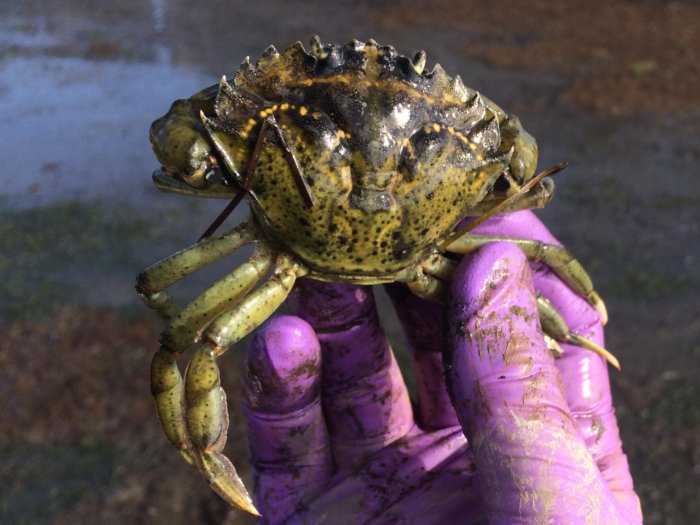Invasive European Green Crab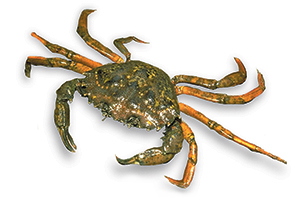
The European green crab (Carcinus maenas) is a small shore crab whose native distribution is in the northeast Atlantic Ocean and Baltic Sea, ranging along coasts from northern Africa to Norway and Iceland. The crab is an effective predator, adept at opening bivalve shells, and has been blamed for harming the soft shell clam industry on the U.S. East Coast. It preys on numerous other organisms, making these crabs potential competitors for the food sources of native fish and bird species. Below are answers to some common questions and a webinar on how to detect this crab and what to do if you find one.
